- Home
- Mary Hooper
Poppy in the Field Page 20
Poppy in the Field Read online
Page 20
Mary and Jane just needed a firm hand, and Poppy applied some of the discipline she’d gained through her VAD work to bring them to order. She made sure they learned how to knit and both girls joined their local comforts group.
Once her family was settled, Poppy began a training course to become a qualified nurse, completing this in September 1918, just two months before the war ended. Although there was an end to the fighting at this time, there was not an end to the war casualties and their treatment and care went on. Poppy continued to work in military hospitals for several years.
Seeing no reason to wait, Poppy and Michael Archer were married in Mayfield in September 1916. She wore a white dress with a poppy embroidered at the hem, and Mary and Jane were bridesmaids in blue satin (Tilly and Dot sourced the material from the USA).
Poppy had hoped that Matthews would be her maid of honour, but she couldn’t get leave. Dress fabric being so hard to come by in France, and the two girls being about the same size, Poppy sent Matthews her wedding dress to wear when she married Stanley.
Sadly, Second Lieutenant de Vere was included in the Missing in Action, Believed Killed list after one of the Somme battles.
Some Notes About The Great War
By 1916, the year in which this book is set, people had realised that the war wasn’t going to be over any time soon. Battles were fierce and often ground that was gained after one fight was lost in the next. More men were urgently needed in the British Army and ‘call-up’ was initially introduced for all unmarried men aged 18 to 41.
The Battle of Verdun began in February of that year and had the dubious distinction of being the longest battle of the war, during which nearly a million German and French soldiers were killed or injured. In May, the Battle of Jutland took place on the sea – the only big clash between the English and German navies. In June, preliminary bombardment by the Allies began for what was going to lead to the greatest loss of life in the whole war: the terrible battle known as the Somme.
The Somme
The Battle of the Somme is remembered especially for its dreadful first day, 1st July 1916. The preparatory bombing, which was supposed to have flattened the barbed wire protecting the German trenches, did not have the desired effect, and nearly 20,000 Allied soldiers died on what was to be the bloodiest day in the history of the British Army. Many recruits in the ‘Pals’ regiments, who had signed up to fight together, perished together. Tanks were used for the first time, but they made little difference to the outcome. The fighting continued through until autumn, when the ground turned into a quagmire, but the battle was not officially halted until November.
The Great War and the USA
At the start of the war, there was public pressure to keep the USA neutral. However, in 1915 the sinking of the ocean liner the Lusitania by a German submarine, with the loss of 125 American lives, went some way to turning the USA against Germany. During the early years of the war, groups of American doctors and nurses volunteered to work in medical units in Europe, though the USA did not officially enter the war until April 1917. In 1918, after a year of preparation and training, the American Expeditionary Force joined the Allies in Europe.
The End of the War
When Poppy went back to England, the war still had over two more weary years to go. Despite the terrible battles at Verdun, the Somme and Jutland, 1916 was to prove as indecisive as the years which had gone before. In 1917 the Canadian Corps took Vimy Ridge and the British attacked Arras, but the French Army sustained over 100,000 casualties and there was mutiny in the ranks on a massive scale. Autumn 1917 saw the appalling Battle of Passchendaele, fought almost entirely in mud, with the continuous driving rain sometimes causing soldiers to drown in mud and filthy water. In 1918 the US army crossed the Atlantic, and this tremendous boost to manpower and morale gave the Allies a decisive advantage over the Germans. The Armistice was signed on 11th November 1918.
The Graves of the War Dead
During the Great War, thousands of men were buried on the battlefield by their comrades, often just where they had fallen. When the war was over, huge efforts were made to locate all these bodies and rebury them in more formal settings. The high numbers of casualties produced a new attitude towards the commemoration of the war dead, and in 1918 it was decided that the bodies of soldiers would not be returned to their own countries and that, to avoid class distinctions, all headstones should be identical. The Commonwealth War Graves Commission now cares for the graves and memorials of the 1.7 million servicemen and women who died in the two world wars.
Acknowledgements
I’d like to thank everyone who helped me discover things about the Great War, all of whom contributed in some way towards the writing of this book.
Some of the incidents in this novel are true and are taken from letters home or diaries of the time. I hope that the relatives of whoever wrote them won’t mind me borrowing and giving further life to these stories.
This book, the second one about Poppy, meant me going to France and Belgium several times – always a pleasure, and I was glad to have the excuse. I sailed across the Channel with P&O Ferries (www.poferries.com) on their newest luxury boat, and was helped considerably by Visit Flanders (www.visitflanders.com), who supplied me with maps, guidebooks, tours and details of museums.
Taking a train in France, I found myself sitting next to a chap who, by sheer good fortune, was a World War One buff. I’m so sorry but your name got lost in a sea of yellow stickers, but thank you for answering my questions, and also for the DVD.
In Flanders, I started my research at the marvellous In Flanders Fields Museum (thank you, Annick Vandenbilcke), then visited some of the smaller and more homespun collections. I also visited Talbot House in Poperinge (which is much as it used to be; you can still have bed and breakfast), where Derek and Eira Richards kindly showed me around. Each night I was in Belgium I attended the very moving Last Post ceremony at the Menin Gate, which is held in Ypres at 8.00 p.m. every day.
Dave Goldberg made me a file showing the Great War in one hundred photographs, which has been very useful for school visits. Mike Willoughby has a travelling exhibition about the men of Henley-on-Thames who were involved in the Great War, and knows the answers to the sorts of things you can’t find in books.
The Imperial War Museum is much more lively and interesting than its name suggests, but was, unfortunately, closed for redevelopment while I was doing my research.
The internet has been invaluable, and it was Cathy and John Huddy who discovered and told me of the wonderful Scarlet Finders website (www.scarletfinders.co.uk), with everything you could possibly want to know about VADs. The Long, Long Trail website (www.1914-1918.net) was also very helpful.
Lastly, I’d like to say that the Casino Hospital is fictitious, and that any mistakes are entirely my own.
Bibliography
Appleton, Edith, A Nurse at the Front: The First World War Diaries of Sister Edith Appleton, Simon and Schuster, 2012
Atkinson, Diane, Elsie and Mairi Go to War: Two Extraordinary Women on the Western Front, Arrow, 2010
Bagnold, Enid, A Diary Without Dates, Virago, 1978
Brittain, Vera, Testament of Youth, Virago, 1978
Cohen, Susan, Medical Services in the First World War, Shire Publications, 2014
Hill, Duncan, The Great War – A Pictorial History, Atlantic Publishing, 2013
MacDonald, Lyn, The Roses of No Man’s Land, Penguin, 1993
Powell, Anne, Women in the War Zone – Hospital Service in the First World War, The History Press, 2009
Rathbone, Irene, We That Were Young, Virago, 1988
Robertshaw, Andrew, Somme – 1 July 1916, Osprey Publishing, 2006
Storey, Neil R. and Housego, Molly, Women in the First World War, Shire Publications, 2011
Also by Mary Hooper
Historical fiction
At the Sign of the Sugared Plum
Petals in the Ashes
The Fever and the Flame
The Remarkable Life and Times of Eliza Rose
At the House of the Magician
By Royal Command
The Betrayal
Fallen Grace
Velvet
The Disgrace of Kitty Grey
Contemporary fiction
Megan
Megan 2
Megan 3
Holly
Amy
Two Sides of the Story
Zara
Poppy
‘Mary Hooper is one of our finest writers of historical romance’
Amanda Craig, The Times
ENGLAND, DECEMBER 1914
Poppy is young, beautiful and clever – and working as a parlourmaid in the de Vere family’s country house. Society, it seems, has already carved out her destiny.
But Poppy’s life is about to be thrown dramatically off course. The first reason is love – with someone forbidden, who could never, ever marry a girl like her. The second reason is war.
As the lists of the dead and wounded grow longer, Poppy must do whatever she can to help the injured soldiers, knowing all the while that her own soldier may never return home . . .
A sweeping, romantic, heartbreaking novel set against the backdrop of World War I
www.maryhooper.co.uk
‘Another sumptuous, satisfying read from Mary Hooper’
Lucy Mangan
Kitty has a comfortable life as a country milkmaid. She is well looked after by the family who live up at the great house, and she enjoys being courted by Will Villiers, the handsome river man. Then, one day, Will vanishes.
Kitty is heartbroken, and when sent to London on an errand, she is determined to track down Will. But, alone and vulnerable in the vast city, Kitty’s fate is snatched out of her hands and she is plunged into a dizzying spiral of despair . . .
A thrilling tale of betrayal, love and true courage.
www.maryhooper.co.uk
First published in Great Britain in May 2015
Copyright © Mary Hooper 2015
The moral right of the author has been asserted
All rights reserved. You may not copy, distribute, transmit, reproduce or otherwise make available this publication (or any part of it) in any form, or by any means (including without limitation electronic, digital, optical, mechanical, photocopying, printing, recording or otherwise), without the prior written permission of the publisher. Any person who does any unauthorised act in relation to this publication may be liable to criminal prosecution and civil claims for damages
Bloomsbury Publishing Plc
50 Bedford Square
London
WC1B 3DP
www.bloomsbury.com
Bloomsbury is a trademark of Bloomsbury Publishing Plc
Bloomsbury Publishing, London, New Delhi, New York and Sydney
A CIP catalogue record for this book is available from the British Library
ISBN 978 1 4088 2983 7
To find out more about our authors and books visit www.bloomsbury.com. Here you will find extracts, author interviews, details of forthcoming events and the option to sign up for our newsletters.

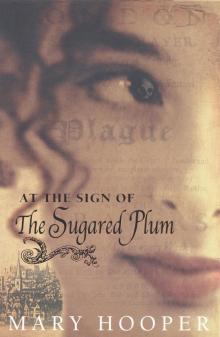 At the Sign of the Sugared Plum
At the Sign of the Sugared Plum Zara
Zara Megan 3
Megan 3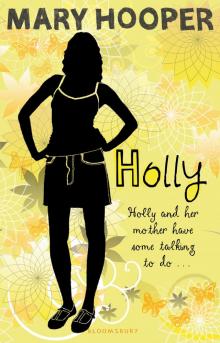 Holly
Holly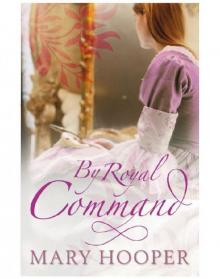 By Royal Command
By Royal Command Newes from the Dead
Newes from the Dead Amy
Amy Poppy in the Field
Poppy in the Field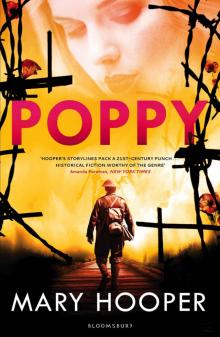 Poppy
Poppy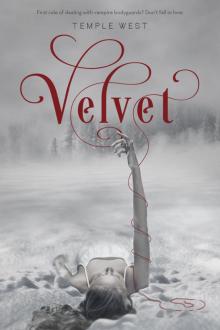 Velvet
Velvet At the House of the Magician
At the House of the Magician The Remarkable Life and Times of Eliza Rose
The Remarkable Life and Times of Eliza Rose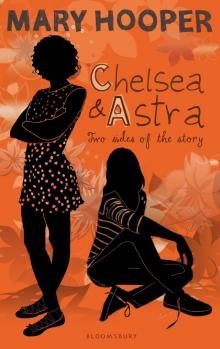 Chelsea and Astra
Chelsea and Astra The Betrayal
The Betrayal The Disgrace of Kitty Grey
The Disgrace of Kitty Grey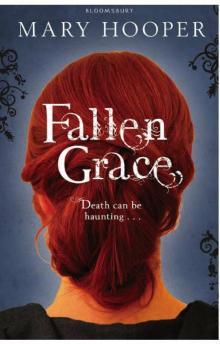 Fallen Grace
Fallen Grace